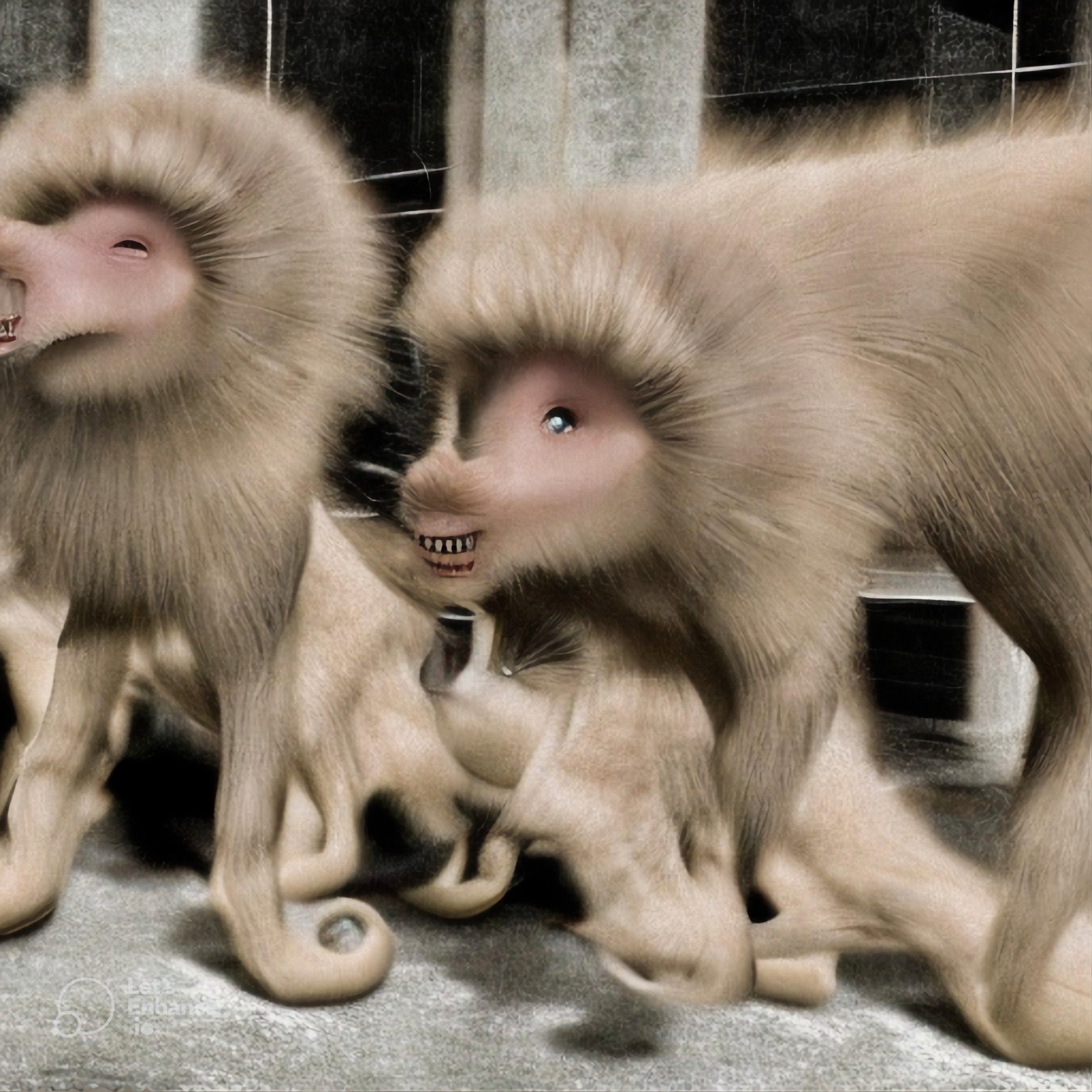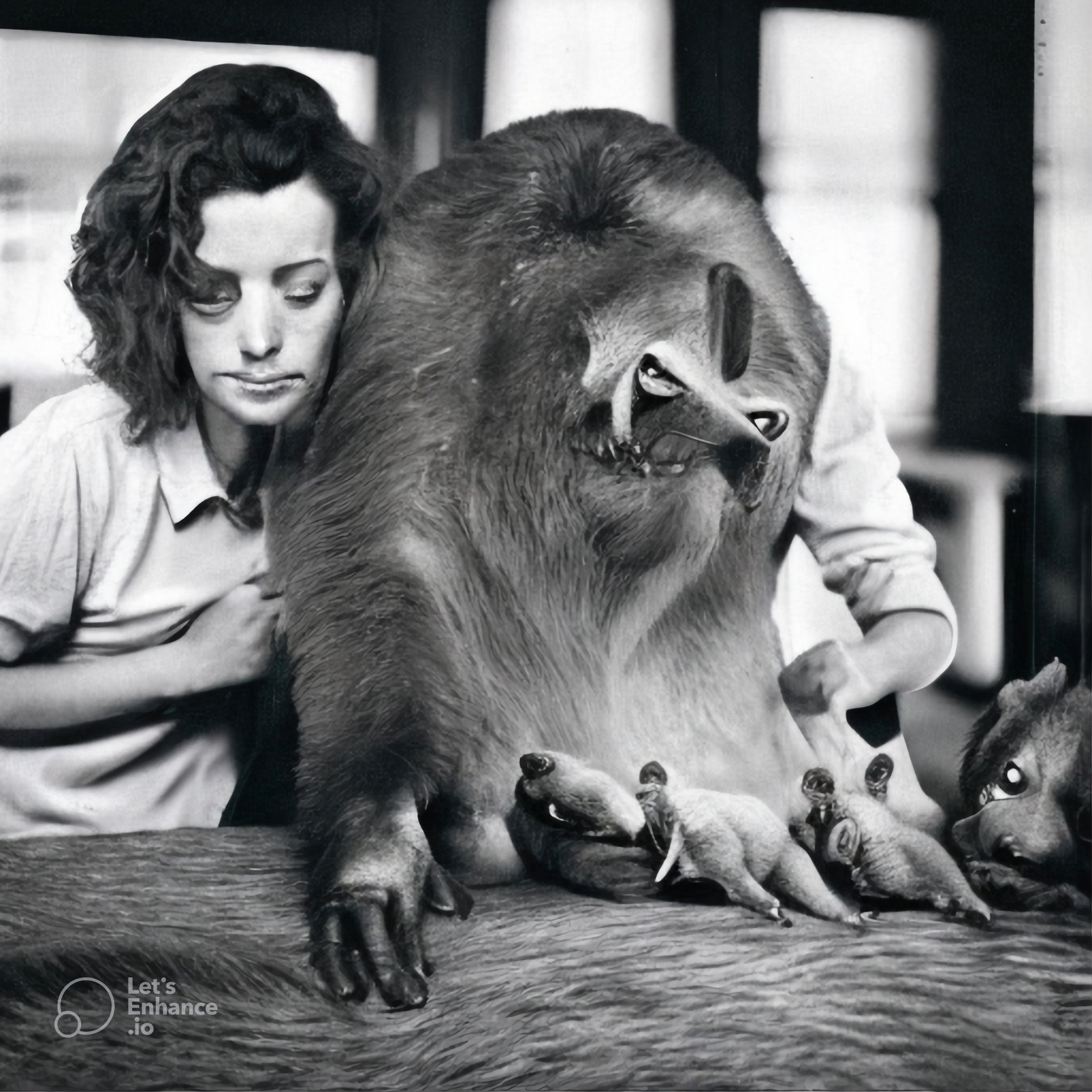
42: Sweetness & Power
Michael Light invited for me lunch at his home with Trevor Paglen and Kate Crawford. Even they seemed convinced this was epochal. An event that would change everything. I’ve been resisting this narrative. Mainly because it seems to me as though these technologies simply seem to produce more of the same, exponentially quicker. Mainly class relations. A further acceleration of the automating of tasks and the consolidation of wealth hardly feels revolutionary. A lot of hyperventilating jargon produced by the industry joins the cacophony of immiserated precarious workers, who whether they know it or not, would much rather have their time than their coercive jobs.
Mike invited me for dinner a week later with a great conductor at the end of his life. A terminal brain cancer. He had just performed Mahler’s ninth. Over dinner Mike showed an artist book he made with images of nuclear testing. It reminded me of Hiroshige’s views on Mount Fuji. The way I can’t see Bellini’s Madonna del Prato without seeing the industrial revolution. Since then I’ve been listening to the adagissimo. I imagine a lonely AI putting it on loop in the glowing overgrown avenues of some post nuclear disaster, 1000 years from now, a record crackling, a geiger counter...
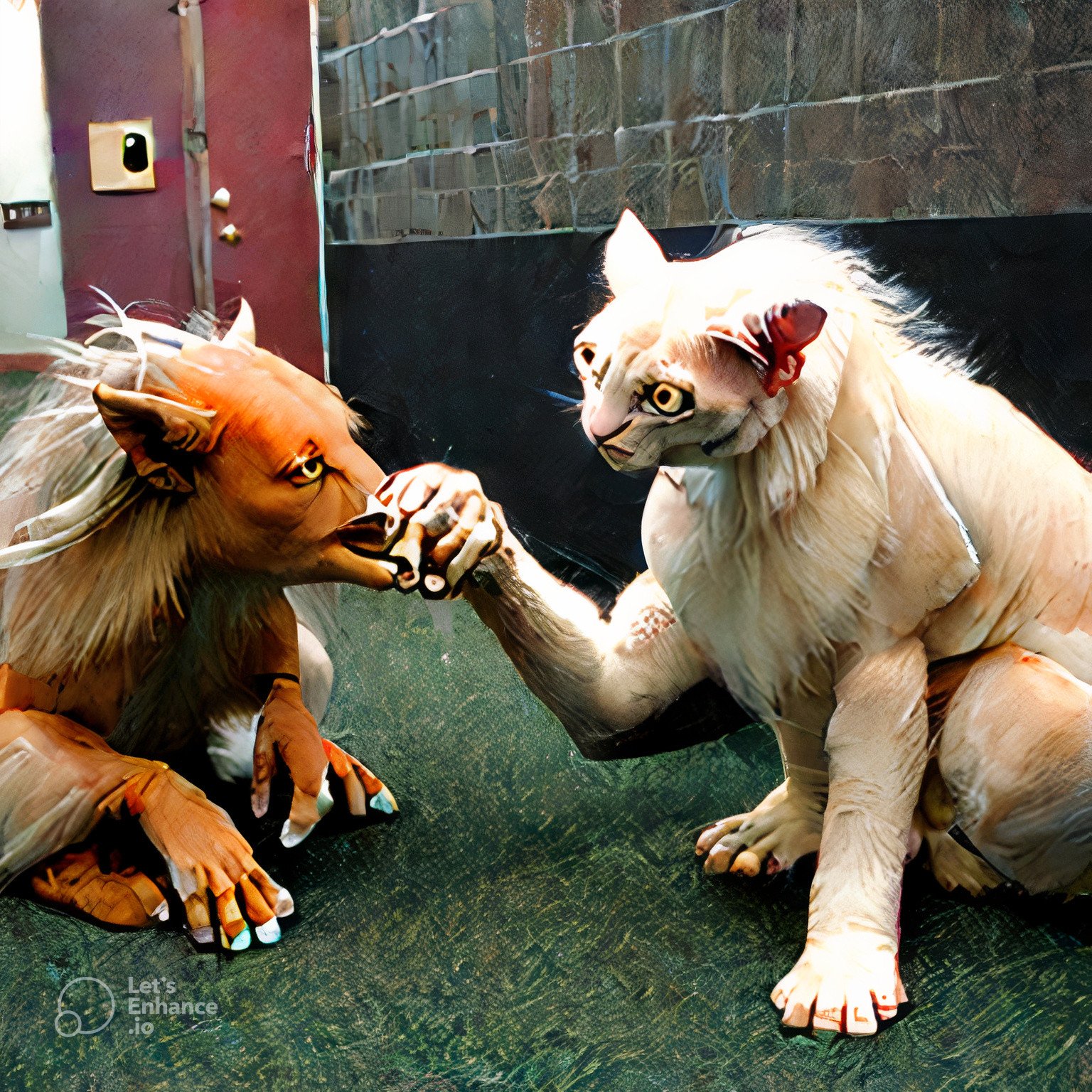
Dear Christian,
Apologies for the delayed response. Your note helped me breathe a little better. Its clarity and soundness of mind.
I feel buried. My wife had a stroke at the beginning of the year, and while she has made a good recovery so far, it has been a lot to manage. She's lost two family members, a sibling and parent, to the same thing. It's dietary, environmental and comes from structural impoverishment and the stress of living undocumented.
This experience has exposed me further to the psychological maladies of this vulnerable diaspora we are in community with. The precarity, indentured and humiliating work conditions, the impossible cost of living, the severing of families, the absence of legal protections, the depression, anger, alcoholism, toxic food, drug addiction. Particularly among men, meth has become an epidemic. This very cheap thing that makes powerless men feel invincible, for a moment, before plunging them into degradation.
It caught my brother as well, who is lost in the desert of Arizona. He was incarcerated again recently and now homeless and missing. I went to try to retrieve him when I got wind of his relapse just before Mirta's stroke. When I finally tracked him down, I was confronted with a skeleton version of my little brother. Gaunt, hollow, furious and totally incoherent. This might be the ugliest drug I've ever seen. I cried so much and haven't had a good night's sleep since.
I don't mean to burden you with this. Not to mention it would have felt wrong too. Please don't feel any obligation towards a response. I just wanted to register it.
The bay area is rather depressing, though ever beautiful in its nature. I miss London, the culture and the friends I made, yourself among them. I miss London fields, artwords and oto. Films at ICA, the national gallery, soane, camden. Dusty knuckle. E5.
I'd like to make a film about sugar. I made some visual notes
I made a proposal too, that I now have to make less academic, according to the feedback i've gotten.
I feel a responsibility to this story, especially after spending time in London. It really was the biggest driver of the slave trade. I think it's the real gateway drug too. Anna Tsing and Donna Haraway offer a plantationocene thesis that suggests it was this model that anticipated modern farming and the factory. Alien labor, addiction, ruination, ecological devastation and so many other intersections with capital.
There's a scholar of slavery and sugar at York called James Walvin and if all goes well I'll come to the UK in June to interview him.
It would be great to see you and catch up then. Wish I could be there in Lille. Happy to hear about Seoul. I applied for residency in Gwangju around the same time. Same for a curator position (art & ecology) at Tate and sent a manuscript to Fitzcarraldo. No idea what will come next and how...
Otherwise, I read a beautiful text from Arnaud Gerspacher at CUNY called The Owls Are Not What They Seem
It's an ethological reckoning with modern and contemporary art and a great contribution to animal studies.
I saw (heard) an incredible film called Expedition Content https://www.youtube.com/watch?v=M7zLgXLSoLI&ab_channel=TheCinemaGuild
it was almost entirely sonic with a few powerful images
Apichatpong Weerasethakul is coming to the pacific film archive for a week of in-person events and classes, and i'm looking forward to that
I had dinner last weekend with a well known conductor dying of brain cancer
he played mahler's 9th recently, the last finished symphony
we had dinner at the house of an artist who works with nuclear histories
the final movement has become entangled with nuclear disaster in my mind
it sounds post human, record crackling, geiger counting, half-lives
Apologies for my tenor, spring is here, lots to be thankful for as well
Kindly,
Perry

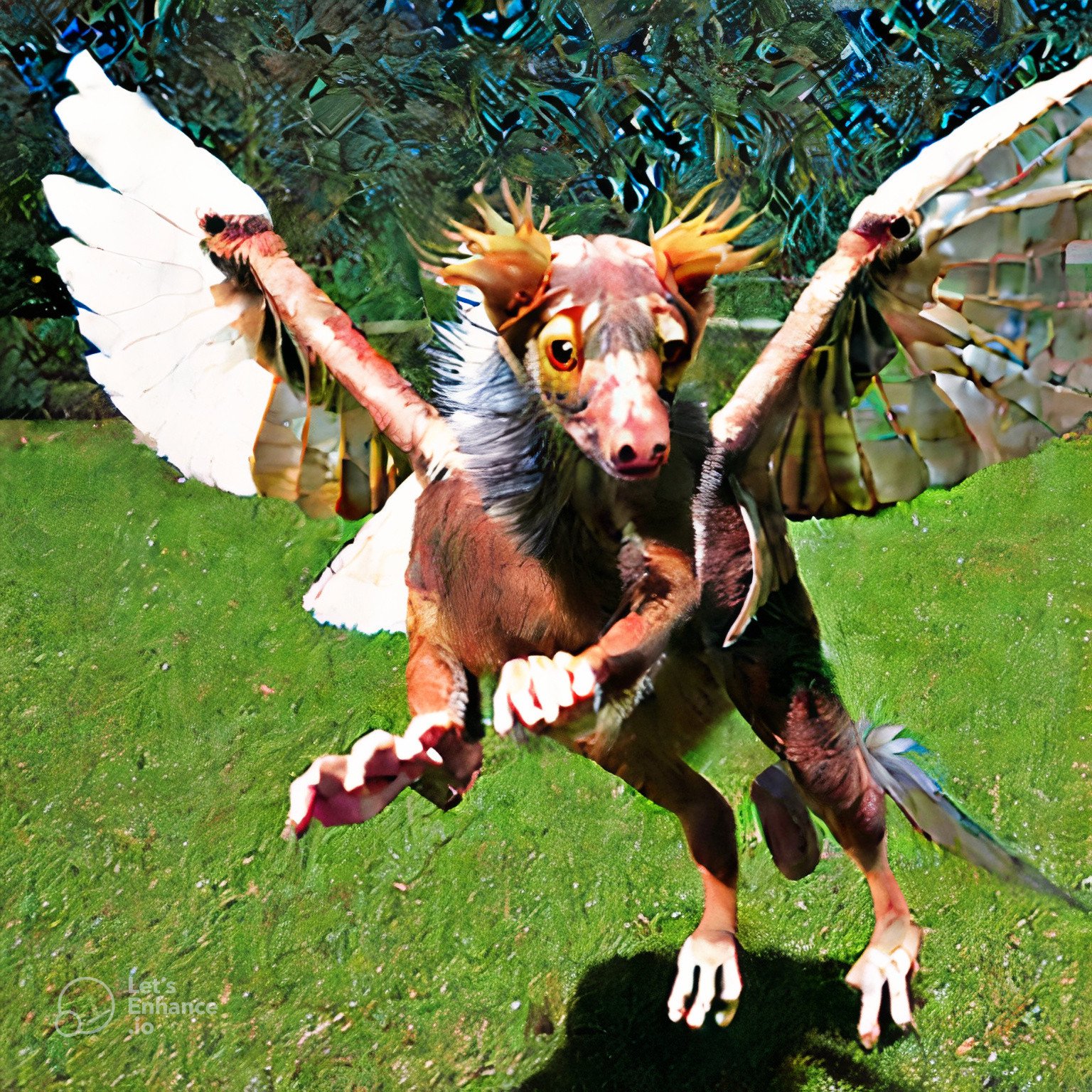
Dear Asia Culture Center and the Futures of Listening Residency,
I am pleased to learn about this opportunity and believe the timing is just right for me to participate in Futures of Listening.
I was born and raised in New York City, lived most of my adult life in California and recently completed a masters in Art & Ecology at Goldsmiths, University of London.
My last project, worked on over the 15 month period I participated in the Art & Ecology MA, was largely focused around a web based archive called ritualsintime.space. It departs from the work of Korean and German scholar Byung-Chul Han. There are five texts in particular that I engaged in ritualsintime.space that relate to my desire to participate in this residency; Good Entertainment: Deconstructing the Western Passion Narrative, Shanzhai: Deconstruction in Chinese, The Philosophy of Zen Buddhism, The Disappearance of Rituals: A Topology of the Present and Hyperculture: Culture and Globalization. These texts are helpful for provincializing Western art traditions and opening up interesting cosmological comparison, or what I call cosmopoetics.
I’ve come to think of much of contemporary art as following a trajectory of western post industrial or finance capitalism, attending to and legitimating the proliferation of neoliberalism. I’m ambivalent about essentializing the so-called West and East, and Han’s conception of hyperculture questions this tendency, gesturing towards an accelerating hybridity that characterizes this stage of internet-connected globalization. I’m interested in better understanding Asia’s history of art-making, particular rituals possessing an artful character, and technological modes of circulation. This opportunity with the Asia Culture Center seems ideally suited for pursuing these research interests, and the artful forms of research I produce are friendly to the contexts and technologies of contemporary art.
My practice uses a wide range of contemporary media to build open and accessible archives that are essayistic, analytical, uncertain, curious, and hopefully—at times—beautiful. I’m interested in cultivating dispositions and questioning interpellated subjectivities. I see art as provisionally co-determined by subjects, objects and times. This is to say, I understand art as relational, situated and more-than-human. My practice is discursive and citational and could be partially understood according to what the theorist Sianne Ngai calls the becoming-ergon of the parergonal discourse of evaluation.
I see ritualsintime.space as open, without a beginning or an ending. It is not a discrete artwork. At this juncture is made up of roughly 85,433 words, 2,645 images, 53 loops, 15 films, 1 thesis (Biennialization and hyperculture; the decolonization of time, dissolution of borders, reimagining of socioecological space, and plural flourishing of more-than-human dignity, or, the everywhere perennial of quotidian kindness and beauty), 20 open letters, 845 links, 1 libretto, 9 field recordings, 2 playlists (rituals shuffle & Deconstructing the Western Passionfruit Narrative), 7 biennial visits, 1 provisional outline for basic social dignity, 1 institute for interspecies sociality (an affect driven research stream for more-than-human conviviality), 1 graduation show (The Sianne Ngai becoming ergon of the parergonal discourse of evaluation library and tearoom), 1 ongoing practice of generosity, friendliness, openness and uncertainty, and 1 distrust of numbers as anything but an occasionally helpful conceptual device.
I’ve been working, along with many people today, on this kind of growing, relational, researched-based, mixed-media archive and the material is fluid in its forms, recombinations, and valences. Listening, being receptive to the world and hospitality are central to my practice. Listening or attunement is a disposition I highly regard and practice. While in Gwangju I would like to research in a traditional academic fashion through your institution and affiliates, and also in the contemporary media forms I’ve been cultivating in my artist projects.
I have a few specific research interests, including historical moments of art and circulation endemic to an Asian context, and an openness to the unknown and contingent I imagine will shape the work significantly. Goldsmiths is world-renowned for its music department and the theoretical contributions it has made to the discourse. I’m a committed student and practitioner of sound art, which is integral to my practice and I have also written theoretically on the subject. Most recently on the legacy of political commitments in Noise, the limitations of polemical negation, and the rise of ASMR.
Futures of listening is precisely the disposition I believe is necessary for collectively imagining the otherwise to our current ecocidal and socially turbulent relations. It’s from an open and uncertain position of listening, we can respond accordingly to our many planetary urgencies.
It would be an honor to listen together in this generous and intentional space you’ve created.
Kind thanks,
Perry
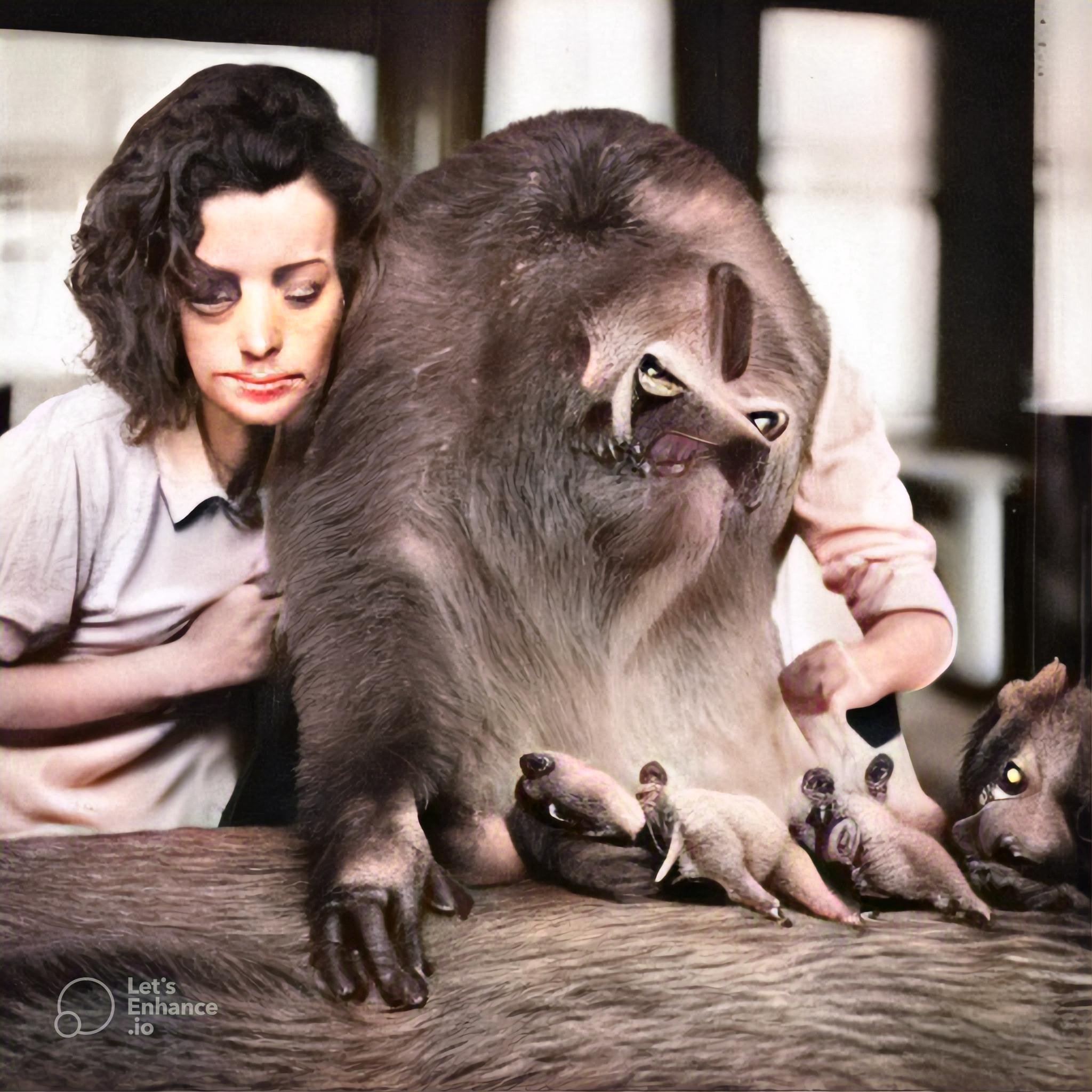
Dear Tate,
I’m happy to learn about this position and the possibility of participating more actively in your vibrant community. I recently finished the inaugural Art & Ecology MA program at Goldsmiths. My thesis was on hyperculture, biennialization and the distribution of time; which I understand as very much concerned with ideas of the transnational, particularly the notion of hyperculture. This adjunct Art & Ecology curator position is highly applicable, and right at the intersection of my research and practice.
In the following passages I’ll endeavor some nuanced and complex thinking towards these open themes and questions. My hope is this will demonstrate a disposition or approach that will resonate with your desire for the appointment.
I apprehend and address the world through a provisional ecological frame, including contemporary art, which in my measure has been floundering with the integration of ecological methodologies within ingrained practices and markets. This often results in superficial and thematic engagements with the becoming-ecological. To add to this, Ecological thinking itself is encumbered with a kind of canonization process endemic to western disciplinarity, that results in a rather limited and doctrinaire professionalization which unsurprisingly produces a familiar range of western chauvinism. Put another way; a small, institutionally-ratified canon of ecological thought, predominantly situated in the West with a very gate kept selection of assimilated representational voices from the rest is ecological not at all. A processual and dispositional shift is in order, or shifts rather, and this is an ongoing, many-voiced and more-than-voiced project. This should happen alongside the ongoing project of reckoning with the historical conditions that produced Tate and its responsibility to its unfolding past.
I see applied ecological thinking, as often performed in western institutions, having a sterilizing effect on practices borrowed from other cosmologies, and can produce some very confusing and contradictory outcomes (not always a bad thing, discursively). By way of an anecdotal example, I had dinner a few months ago in Paris with a self-styled ecological expert and curator and sat through a curious and somewhat misguided lecture on the four definitive types of ontologies and ‘ontological design.’ I’m concerned that Enlightenment hubris and accelerating technocratic thinking cloaks itself in green.
While beyond the remit of this letter, I could provide many examples of institutional works, born out of this kind of disposition and produced under the aegis of Ecology that have left me with much trepidation, and I do my best to apply an an intersectional evaluation that considers labor, materials, temporalities and a rather under-evolved reckoning with what some call Ethology. There are other epistemic modalities that have even less of an available discourse to draw on that are significant to my thinking around ecology and art as well. To approach the role of a curator of ecology, I’d like to return to their etymological roots. Curate comes from care and ecology from oikos, or the family and home, a concept we can extend as far as possible towards everything we are and share. This care for our family and home is what guides this work for me.
I see the modest gains of this category, Ecology, which has likely exceeded the limits of its capacity, being taken up and instrumentalized by a stunning array of often highly questionable projects. This requires care and responsibility, to protect the integrity and spirit of many insights collected under this rubric. I maintain that more than a category, ecology is better suited as a disposition. It is likely not expert and authoritative, though perhaps studied and committed. I would suggest its qualities are open, curious, kind, friendly, generous, peaceful, playful and resolved to accompany the many challenges of our time with grace and humility. The opening of these qualities towards the more-than-human is a large part of the work.
In my understanding, Western modernity’s ecologically-led embrace of nondualism, in concert with the new materialist turn, which reverberates through contemporary art, has hardly led to novel ideas. More apparently, its most advanced claims lead us easily into the very beginning and most basic tenets of cosmovisions existing for millenia and continuing today. This condition, let's say of an adolescent modernity maturing into a more integrated—albeit continually violent and chauvinist—position within history, vis-à-vis the comparative cosmopoetics of international exhibition spaces like Tate, produces an interesting setting, in the heart of waning empire, to which ecological thinking can be applied responsibly. The humility born of this realization might inspire in us the sense there is much already here to learn from and engage with.
I am particularly interested in this context and position at Tate, because it builds upon a collaboratively engaged, many-year long research project about precisely the product—and its ghastly production processes—that enabled both Tate and this conversation to be happening. My research is on sugar, slavery, plantation agriculture, and visual culture; and their roles as drivers of the so-called Anthropocene.
Within the spheres of contemporary art, and in relation to this position at Tate, I have particular affinities for practitioners and histories of the kind of ecological art readily assimilable into conventional exhibition-making, and would like to pursue this kind of curatorial practice at Tate. I’m fluent in the ecological art canon, its protagonists and discourse, and despite its many biases and limitations, I find it a fertile and generative space for mutual consideration. I would be happy to share more about the who and how of this. More significantly perhaps, I have a number of exhibitionary methodologies and subjects that radically depart from some of the more-obstinate conventions and received ideas, which I’m also interested in pursuing with Tate. I’m attentive to what we might call media ecologies, as well and how art, or cosmopoetics, are developed outside of the provinces of western neoliberalism, possessive individualism and the increasingly consequential algorithmic determinism that delimit our lives. A resistance to these trends, as articulated in contemporary art, afford a great number of approaches to exhibitions, event-making and the application of institutional resources towards the otherwise. I would, again, be happy to elaborate on some of the projects I have in mind, and will share here that these initiatives are drawn from my research in biennial studies, extrainstitutionality, perennials, open access, remediation and repair, object libraries, hospitality, diverse partnerships, and the connective affordances of new technologies. I welcome the opportunity to bring these possibilities and projects, that are in various stages of development and specificity, into dialogue and collaboration with the experienced and skillful people working in your community.
Throughout my studies at Goldsmiths I frequented Tate, as an engaged member, and wrote about some of my experiences, including Anicka Yi and Cecilia Vicuña’s Turbine Hall commissions. I’ve also written about other cultural events relating to Tate in a forthcoming manuscript. I remember taking refuge at Tate Modern during the unprecedented heat wave last year, a poignant intersection of art and ecology that inspired a number of ideas relating to these themes and this position.
My final exhibition at Goldsmiths was primarily a curatorial endeavor, though I increasingly feel less of a need to taxonomize a relational practice in these terms. It was a space of hospitality called the Sianne Ngai Becoming-ergon of the parergonal discourse of evaluation library and tea room. I’m interested in how art is metabolized and what practices and conditions support a healthy culture. I’m also interested in what gets excluded from Art and the alternate modes of cultural dissemination. I have another long-term research project dealing with some of these themes through a comparative cosmological approach, rooted in media theory and technology studies. This research, especially in the context of this position at Tate, could benefit from the exhibitionary form.
I would be happy to be in touch about the possibilities of working together towards these open questions at the porous convergences of art and ecology. I would also like to note that the tone of this letter and language I’m using is more academic and theoretical than I would use for framing exhibitions at Tate, where one of the great and most exciting imperatives is engaging with an incredibly diverse audience community.
In addition to my resume, I’ve included a portfolio, with links to sites that offer many other textual and visual considerations of both art and ecology, particularly in ritualsintime.space
Kind thanks and warm regards,
Perry Shimon

Some other generations for the prompt of interspecies sociality
